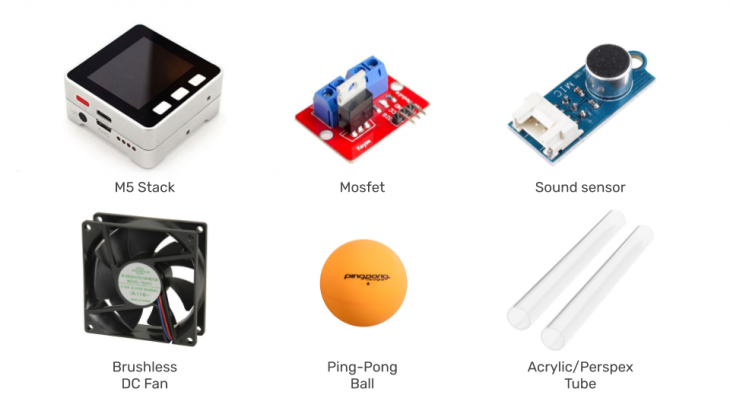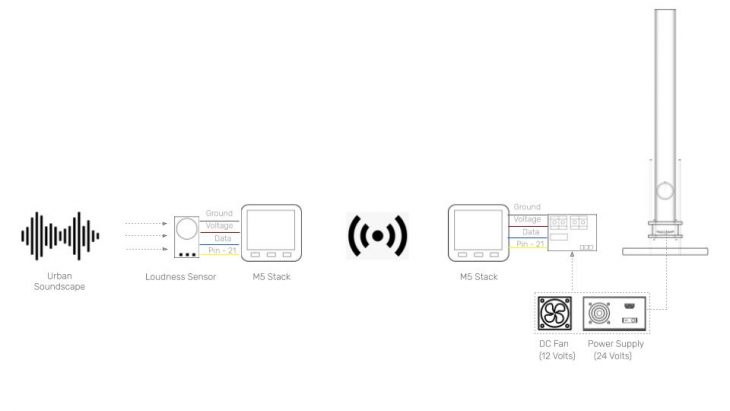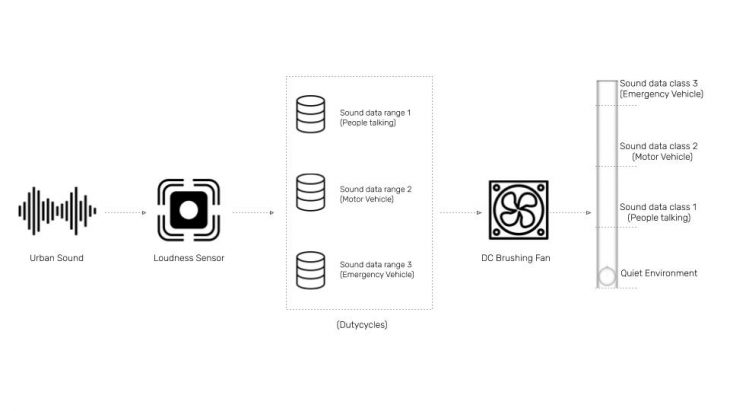CONCEPT
Cities can be noisy, urban noise affects more than quality of life issues, the hidden dangers of urban noise cause serious and long-term harm to health. Is it possible to reinterpret the urban soundscape? How can we simplify the perception of loudness if it comes from different sources and at different locations?
Decibel is a commonly used unit of sound measurement but it’s difficult to the human perception if there are many data sources – (e.g. how does a 20dB sound would look like?) The project aims to reinterpret sound data by visualizing sound input through physical interaction.
The items required to make the hardware for this project are as follow; Two M5 stacks, 1 Sound sensor, 1 Mosfet, 1 DC Brushless Fan, am Acrylic/Perspex Tube, Ping-pong ball, and a fabricated stand to combine the fan and tube. Data received from each sensor was categorized for 3 different ranges (from max to min) and converted to 3 duty cycles (PMW signal) respectively. Therefore, highest values lead to highest duty cycle and consequently to the highest speed of fan rotation. The fastest rotation of the fan resulting in increased elevation of the ball to float higher.
WORKFLOW
In summary, M5Stack receives values from the sound sensor and uploads them to the platform. The second M5stack reads values and processes them into analog voltage signal. By doing so, it changes speed of motors rotation. Hence, making the ball float according to the frequency of the sound. The higher the frequency, the higher the ball floats. The experiment could be used to visualize and compare real-time public space condition in different areas of the city, or act as an art installation.
Urban Soundfloat is a project of IaaC, Institute for Advanced Architecture of Catalonia
developed at Master in City & Technology in (2020/2021) by:
Student: Aryo Dhaneswara, Pawitra Bureerak
Faculties: Angel Muñoz, Christian Rizzuti


